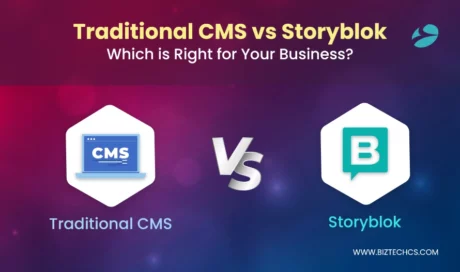5081
A Comprehensive Guide to IoT Inventory Management
23 Sep, 2020
14 min read
5081
23 Sep, 2020
14 min read

Inventory Management has always been a challenge. Whether it’s after the industrial revolution or today’s Industry 4.0. Modern issues like unplanned downtime, equipment breakdown, excessive inventory, etc. also plague industries today.
The only difference between the prehistoric age and today is IoT. Previously, we didn’t have IoT but today IoT and big data aim to resolve real-time production and management problems. Let’s look a few statistics:
Forbes estimates that IoT, on a whole, will be a $1.2 trillion industry by 2022.
A report from Markets and Markets forecasts that IoT (Industrial Internet-of-things) will grow from $68.8 billion to $98.2 billion by 2024.
Do you know that only 33% of manufacturers use inventory management software, whereas 67% still rely on excel sheets?
That’s not the only issue – there are many.
Well, the best part is that you can tackle all these with IoT inventory optimization. Let’s learn how!
But first, let’s check out the drawbacks of traditional inventory management that IoT helps overcome.
Topic Outline

Inventory Management plays a major role in every industry. Previously it meant managing spreadsheets, physical checking, and storing of the stock. All these incurred heavy expenses. Let’s discuss the other drawbacks of traditional system:
If you use outdated spreadsheets to track inventory, you would never have accurate data of the inventory. For instance, you shipped the last piece of a product in the warehouse and forgot to update it in the manual sheet. The next time somebody orders the same thing, the staff or inventory manager won’t know if the product is available or not. IoT based Inventory management tracks the products and every inventory data in real-time.
Manual inventory management doesn’t fill the gap between the inventory and the demand. Plus, it fails to predict the future, or streamline data to analyze the trends. IoT inventory optimization is essential or you may end up piling non-essential stocks with no orders.
Businesses require a centralized approach to stay profitable. The manual inventory management system uses a decentralized approach. This means data is updated periodically. On the other hand, with IoT based inventory management, you can update the data on all the devices as soon as you make a sale on POS.
Manual inventory management systems have limited growth opportunities. If future, as your business expands, so will your inventory. Manual system helps integrate cost-control methods, predictive analysis, and process efficiency measures. Moreover, you would require a huge man-power to manage your inventory which in some cases can be inefficient and inaccurate.
Keeping tabs on inventory is a waste of time and increases labor costs. If you manage your inventory manually, the chances of misplacing are more. Moreover, you cannot order the inventory systemically.
IoT inventory optimization is essential for businesses to run smoothly. It saves time, optimizes inventory. Planning future growth strategies by predictive analysis is another advantage. Moreover, it reduces the labor and process cost by automating everything.
We will guide you through every stage of your IoT initiative and help choose a solution that works best for you.

IoT Inventory Management solution lays a foundation for a digitalized approach. It has many benefits including:
IoT Inventory Management enables real-time communication. By connecting sensors and RFID tags, the devices can transmit data, thereby communicating easily. This wireless inventory management method can improve the way businesses communicate.
With IoT inventory optimization, you can know the exact location of your inventory. Moreover, with 5g connectivity and sensors, you can micro-track each item.
Human intervention can result in inaccuracy or errors in data collection. The best approach is to have it automated. IoT inventory management solution scans the item, tracks its presence in the warehouse, and records it into the system.
IoT inventory optimization improves logistics in the warehouse. Warehouse management includes systematic storing of items. The ML algorithm can analyze the patterns to arrange items as per demand. IoT Inventory Management includes the use of smart shelves and stores that tell us how long the product is on the shelf.
Manufacturers can track the inventory data in real-time. This helps the identify the bottlenecks and pinpoint the machine functioning. Say, if an inventory is right in front of a machine, that means the machine is not functioning to its fullest or its underutilized. Also, IoT inventory optimization will help you in identifying product demand.
IoT inventory optimization can help managers in reducing lead time. This is possible with real-time data and analytics-based foresight. Zara was able to take a garment from design to smart warehouse in just 10 days! All by using RFID enabled smart Inventory Management solution.
Machines help automate all the tedious tasks of picking up the order, customer delivery, and packaging. By integrating the IoT system with robotics, all human-related tasks can be automated. Such as a programmed drone can help with customer delivery.
As for now, cloud-based inventory systems are popular to track items in real-time. They use an RFID tag or barcode label to collect the inventory data. This includes expiration dates, stock or stockout, item location, forecast demand, and more.
With IoT inventory optimization, the ability to track and communicate with products will increase. RFID tags, for example, hold more information about the product and can easily transfer it to the inventory system. They can also send information about temperature, weather, damage to the product, etc.
With an integrated GPS location, you will know exactly where every item is. Every item will have its own unique identifier. And, thus, you will be able to pinpoint every item. This real-time tracking will decrease stock storages, overstocks, and save time.
Also, you can identify what is working for you and what’s not. For example, are the shipments getting late due to traffic at a certain time of day? Are specific products demanded more at certain locations? What processes are damaging products? With IoT, you will get answers to all these questions and more.
IoT improves the ability to view, track, and monitor inventory. Inefficiencies and losses that you missed or failed to notice will be simple to spot and act on. As a whole, it carries immense potential for both consumers and the company.
Related Read: Asset Management using IoT
IoT driven solutions have become more than a concept now. Companies have started implementing sensors, RFID tags, and other forms of connectivity to manage inventory.
There’s no lack of approaches to smart inventory. However, in our opinion, these are a few rewarding ways to leverage the full potential of technology:
What can be the best choice for your business?
Check out our case study where we created an IoT-centric ecosystem for one of our client: Enviro 360
Inventory management solution based on IoT and RFID uses tags to track every product. The tag has a unique identification number (UID) containing encoded digital information such as model, batch number, expiration date, etc. RFID readers scan the tags and extract tags’ UID. They further transmit to the cloud for processing. Along with the tags’ UID, the cloud also receives the reader’s location. Based on this data, the cloud states the location of the product, and displays the real-time update.
Let’s see the technical components and how they communicate with the product.
The first is RFID. It has three main components: RFID tags, RFID antennas, and RFID readers.
An RFID tag consists of a UID that carries information about a specific product. You can attach the UID to any physical surface, raw material, package, crate, and pallet. Remember the tag for every product will be different. For example, if the inventory is chocolate, adding an RFID tag to the chocolate is not feasible. Instead, you can add the tag to the pallet. So, the first time, a product enters the inventory store, you utilize a RFID tag that contains all its information.
An RFID reader uses radio waves to write to and read from the tags. It can read from a number of tags at once over a distance. When a reader catches the UIDs of the tags, it reads the data of the product. Then it transmits the data to the cloud, together with the reader’s location and time of reading.
So, when a reader reads a tag to gather information, RFID antennas catch the waves from the reader to supply energy for tags’ operation and transmits radio waves from tags to the reader.
So, what happens when the data is transmitted to the cloud?
IoT comes into the picture!
When the cloud receives the product data, the data lake filters it. Machine learning (ML) algorithm help turn it into meaningful insights. Not only this, but IoT based Inventory Management can also forecast the number of raw materials or products required for the next production cycle. Besides, it can notify about the items in the stock and stock-outs. Moreover, it is possible to integrate inventory management using IoT other systems. For example ERP to share data with enterprise departments.
With all the new technology for inventory management, you can be assured to work with a new and improved system.
* Note: RFID is much more effective than a barcode, but it has some limitations. So, while dealing with IoT driven RFID tags, keep a check on these limitations.
IoT in inventory management can benefit companies with multiple uses and an increase in the ROI. Here are the most compelling use cases of IoT in Inventory Management.
IoT enabled asset tracking helps enhance efficiency and safety by locating and tracking carts.
With real-time asset location, managers can manage key inventory and verify that it’s stored properly. Also, the tags can help prevent collisions by generating alerts. Let’s say there are multiple forklifts crossing similar paths. IoT driven asset tracking will not only track the location of the forklift but also the frequency of use over time. Ultimately, this helps reduce cost and time.
RFID tags with IoT also provide information on weather, temperature, and other variables. If the product temperature doesn’t match the requirement, the status of the product is auto-updated to damage. This way, the staff doesn’t have to keep a check manually.
Every product has an RFID tag that has a unique identifier. Using that UID, a network of sensors can track the location of the product in your supply chain. You can even check if the product is in stock or not. Using wearables, your staff can know the location of the product in the warehouse.
Maintaining a balance between overstocking and understocking can be challenging. If you stock less, you may experience stock-outs. While if you stock too much, you may end up taking more space.
With the IoT Inventory Management system, you can track low inventory levels and identify the reorder points to avoid stockouts. You can even predict the future of the product and stock the products that are more in demand based on the data and trends. Going further, you can automate the reordering of products, along with receiving orders, processing, and shipping.
Sensors give updates about the condition of the products, and other machinery in the warehouse. This is beneficial in taking preventive maintenance checks. For example, the usage frequency of forklifts helps calculate the holding capacity. The inventory manager will know when the machine is prone to failure. By taking immediate action, they can reduce downtime and save costs.
Today, there are plenty of software and applications that are redefining the traditional methods of inventory management. For instance, 365 smart inventory. It is a popular app assisting businesses in adding and managing inventory products of all kinds.
And IoT is one such technological innovation that is here to stay and transform the way businesses have handled inventory so far.
Also Read: Predictive Maintenance using IoT
And so,
Take-Home Message is…
IoT Inventory Management solution offers optimized operations with real-time data. That’s why, you should consider outsourcing your tedious tasks to IoT. That even helps you reduce lead time, and avoid hidden cost. Overall, IoT Inventory Management brings greater tracking, and quality management, on inventory.
Have some out-of-the-box requirements? Biztech can help you develop custom IoT-based inventory management solutions that you can easily integrate with your business flow. In case of further queries;
All product and company names are trademarks™, registered® or copyright© trademarks of their respective holders. Use of them does not imply any affiliation with or endorsement by them.

Storyblok
31838
By Devik Gondaliya
02 Apr, 2025

Storyblok
32795
By Devik Gondaliya
01 Apr, 2025

Storyblok
33347
By Devik Gondaliya
27 Mar, 2025